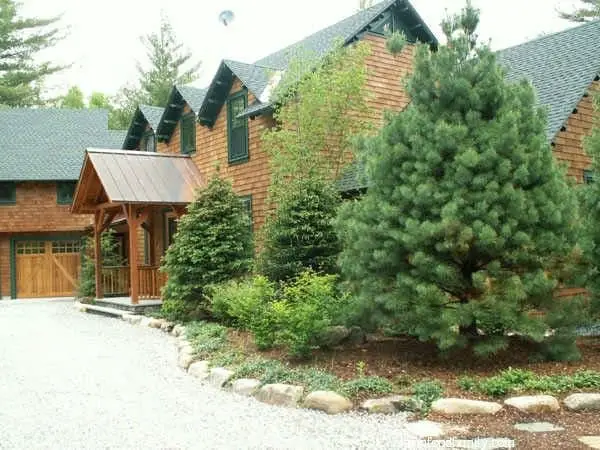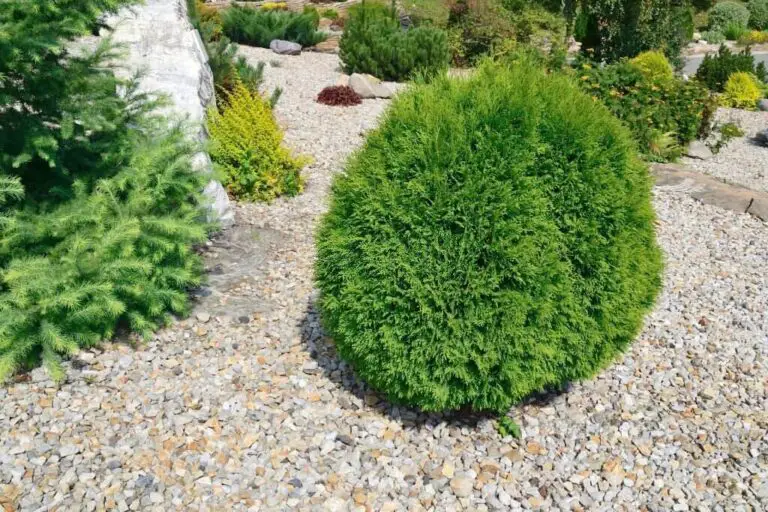30+ Popular Types Of Mosses With Names, Pictures And Their Uses
Moss, a tiny but fascinating organism, has been around for millions of years and plays a crucial role in the ecosystem. As we explore its benefits and drawbacks, it’s clear that moss is more than just a simple plant. With over 20,000 known species, it’s no surprise that moss can be categorized into different types based on factors such as shape, size, and habitat. From the American Tree Moss to the White Cushion Moss, each species has its unique characteristics.
In addition to being an important part of the ecosystem, moss also has practical uses, including in gardening and even as a natural air purifier. However, it’s not all good – moss can also cause problems when it overgrows certain surfaces. Despite this, moss remains a valuable and fascinating organism that is worth learning more about.
What is moss?
Mosses, a type of non-vascular plant, are characterized by their ability to thrive in environments with high humidity or moisture. They don’t require roots to survive and can grow in a variety of settings, including wetlands, rainforests, and even shaded areas. In fact, many species of moss are well adapted to life in the shade, where they can spread quickly through the release of spores.
With over 10,000 known species, mosses have been around for a long time – fossil records show that they’ve been present on Earth since at least 540 million years ago, making them one of the longest surviving plant species.
Pros and cons of moss
When contemplating moss as an alternative to traditional grass, it’s essential to weigh the advantages and disadvantages. On one hand, moss has several redeeming qualities that make it an attractive option. For instance, it requires minimal maintenance, is highly resistant to drought, and can thrive in areas with poor soil quality. Additionally, moss comes in a variety of textures and colors, allowing for unique visual interest. However, moss also has its limitations.
It may not be as durable as grass, can be susceptible to overgrowth, and may require more frequent pruning than traditional lawns. Ultimately, the decision to opt for moss or grass depends on your specific needs and preferences.
Pros:
The low-maintenance nature of this particular plant makes it an excellent choice for those who want to enjoy its beauty without committing to a lot of upkeep. It thrives in environments with high humidity and moisture, making it perfect for areas that are prone to dampness. One of the most appealing aspects of this plant is its versatility – not only does it have a unique visual appeal, but it can also be used to add texture and depth to any space.
Moreover, this plant is an eco-friendly option as it doesn’t require frequent fertilization or excessive watering, making it free from chemical usage. Perhaps one of the most significant benefits of this plant is its ability to prevent soil erosion, which makes it a popular choice for revitalizing lands that have been heavily mined or reclaimed. Additionally, its shade tolerance makes it an excellent option for planting in areas with limited sunlight.
Cons:
The addition of this nutrient-rich amendment may inadvertently foster the proliferation of liverwort, a non-native species notorious for its ability to overwhelm and potentially choke out surrounding vegetation through sheer density.
What is moss bad for?
Moss’s reputation precedes it, but when it comes to certain building materials, its presence can be detrimental. Stock wood, concrete, and fences are just a few examples of structures where moss might pose a problem. Additionally, moss’s dense growth as a ground cover in lawns can have unintended consequences, potentially masking the overgrowth of fungus in the lawn. However, when it comes to its natural state, moss is largely harmless.
How can moss be categorized?
Mosses have earned their place as a distinct botanical category within the Bryophyta division, boasting an impressive 12,000+ recognized species. While they’re often associated with carpet-like covers in forests and lawns, this incredible diversity of greenery has far-reaching applications. Among the most popular moss varieties is sphagnum, commonly utilized for its peat moss properties, which have become a staple in commercial horticulture.
Moss species identification
When it comes to identifying moss species, there are two primary categories: Acrocarpous mosses (Acrocarps) and Pleurocarpous mosses (Pleurocarps). One of the key distinguishing features of Acrocarps is their growth habit, which involves forming mounds with upright, unbranched stems. This type of moss requires careful maintenance to thrive, as it cannot tolerate excessive moisture and needs to be periodically dried out.
In contrast, Pleurocarps are known for their rapid growth rate, spreading in a carpet-like pattern with more flexible stem arrangements and a generally shaggy appearance compared to Acrocarps.
Types of moss
American Tree Moss (Climacium americanum)
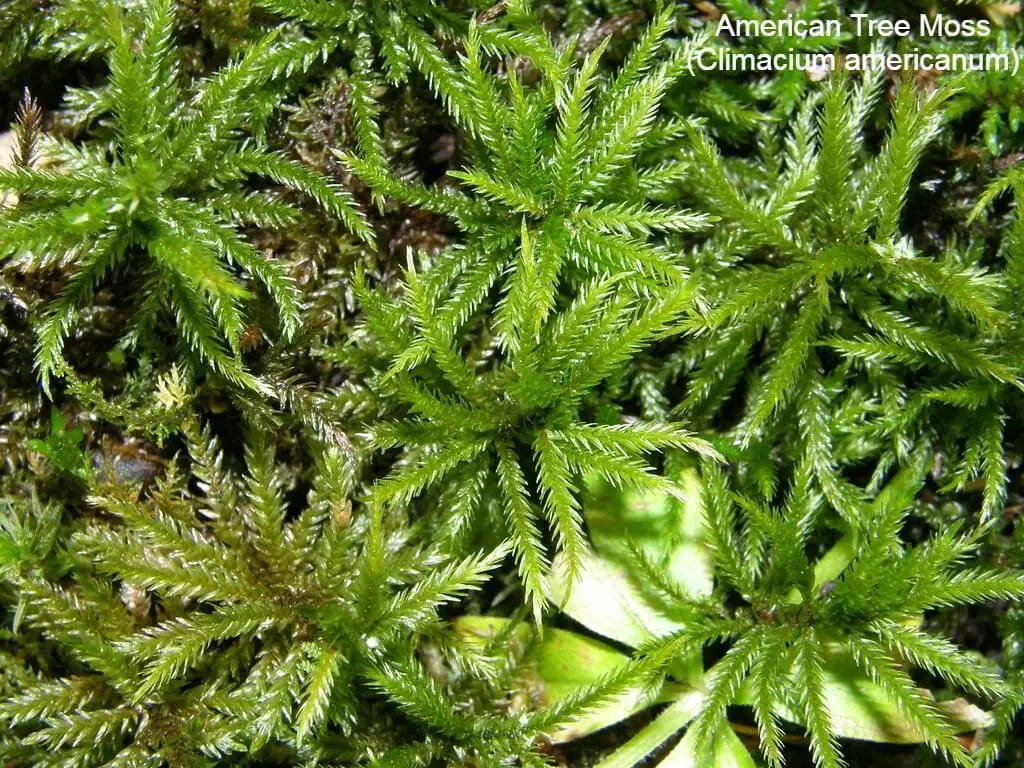
The versatile source plant is renowned for its uses in crafting beautiful decorations and wreaths. Characterized by its dense, branching growth pattern and striking combination of pale green foliage and reddish-brown stems, this moss thrives in environments featuring waterways and woodlands, with native habitats spanning eastern Canada and the northern United States.
Baby Tooth Moss (Plagiomnium cuspidatum)
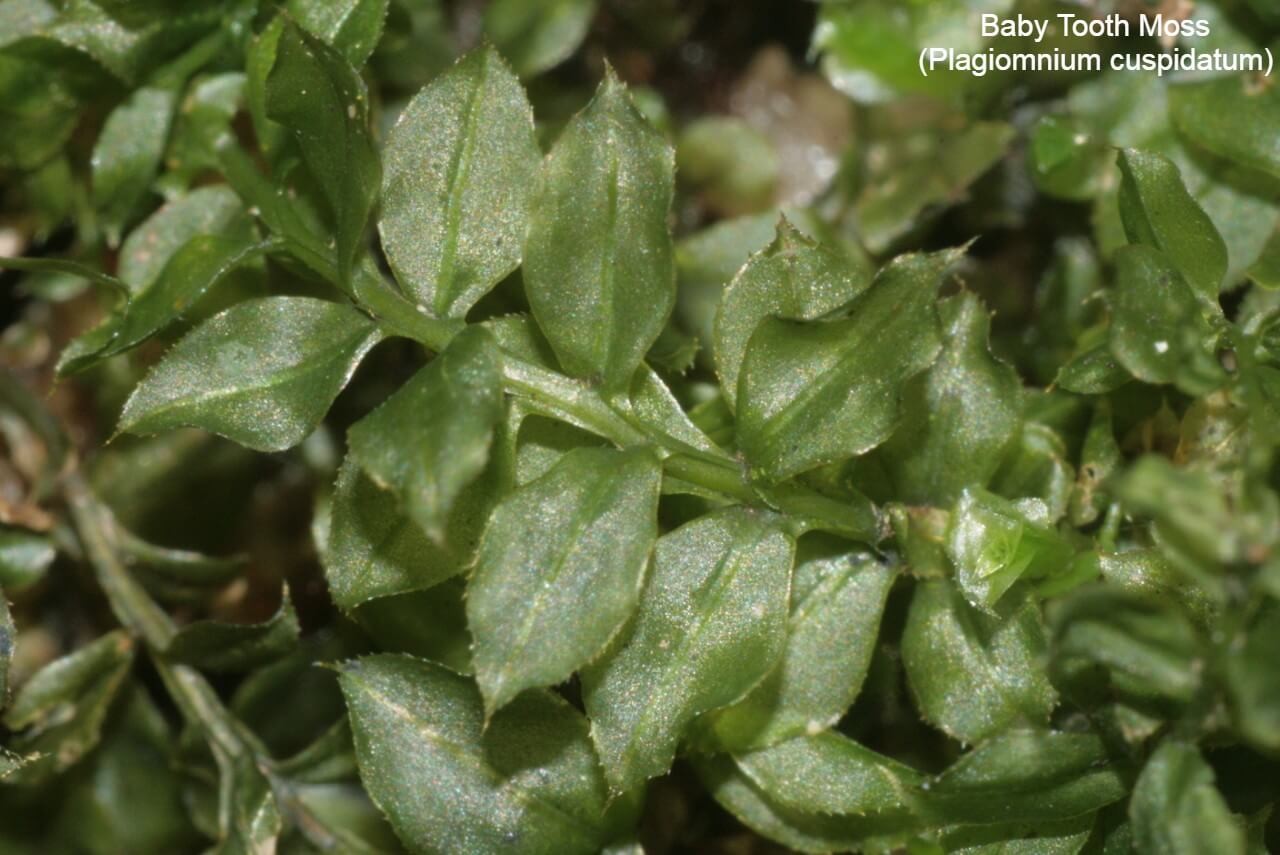
This versatile plant can thrive in a wide range of soil conditions, making it an ideal choice for many gardeners. One of its most fascinating features is its use by birds to construct their nests. The plant’s unique foliage takes the form of capsule-like structures with red-brown stalks that rise from the base. Its leaves are characterized by toothed edges, which is where it gets its name.
Interestingly, this plant prefers cooler temperatures and more damp soils, making it a great addition to gardens in temperate climates.
Brocade Moss (Hypnum imponens)

A common sight in forests, the species thrives in dense clusters of vibrant green foliage. Its leaves are characterized by a glossy texture that transforms into a warm orange hue as the plant reaches maturity. Interestingly, this species sprouts from unique sources such as rotten logs, tree stumps, and even tree barks. Its peculiar name stems from its uncanny resemblance to intricately embroidered fabric.
Catherine’s Moss (Atrichum undulatum)
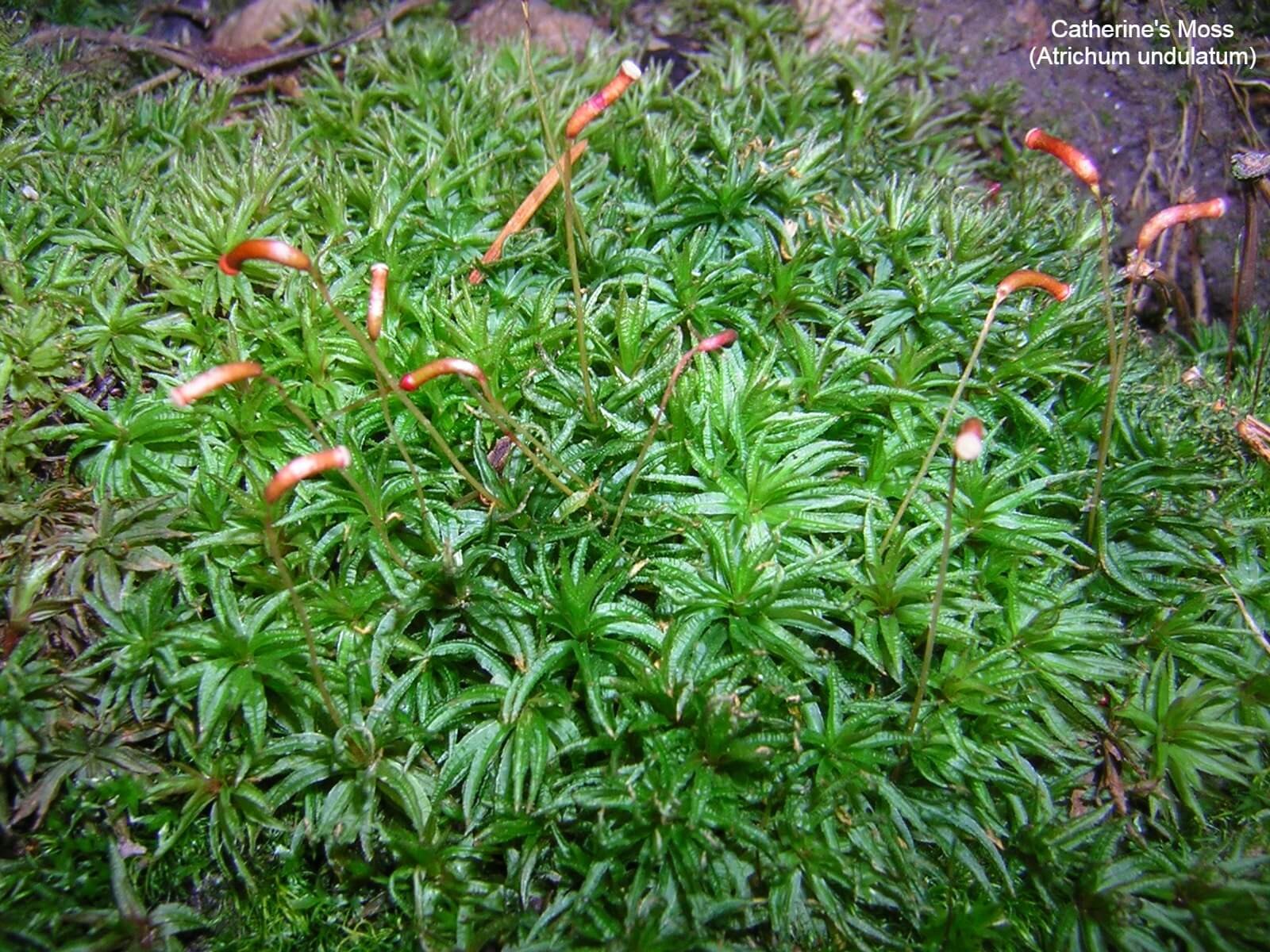
This enigmatic species, also referred to as big star moss, owes its unique appearance to the lancing habit of its leaves, which gives the impression of a star-like shape when viewed from above. Its striking foliage boasts deep green hues and stiff texture, punctuated by creamy white streaks.
Interestingly, this plant’s ability to thrive in partial sun to full shade conditions is matched only by its dramatic transformation: as it dries out, its leaves turn a crisp brown, providing a fascinating visual display.
Common Haircap Moss (Polytrichum commune)
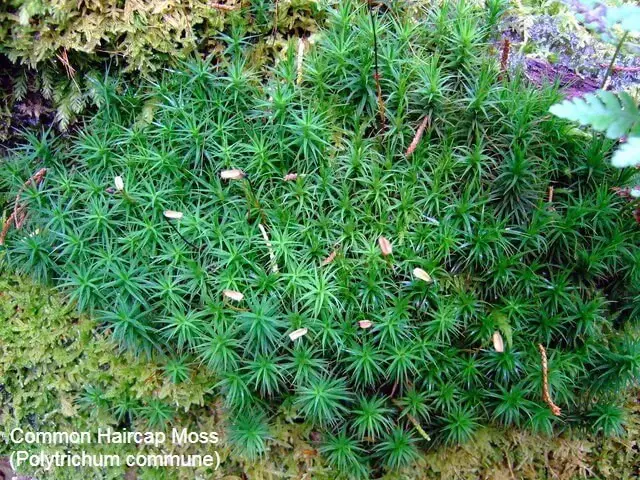
The humble star moss is effortlessly recognizable due to its striking appearance. The plant’s long, upright fronds feature spiky leaves that alternate between deep and pale green hues. Additionally, the stems boast a warm, red-brown tone. This species thrives in acidic environments with high levels of moisture. When viewed from a distance, the foliage takes on an otherworldly quality, resembling tiny stars scattered across the landscape.
Common Peat Moss (Sphagnum centrale)
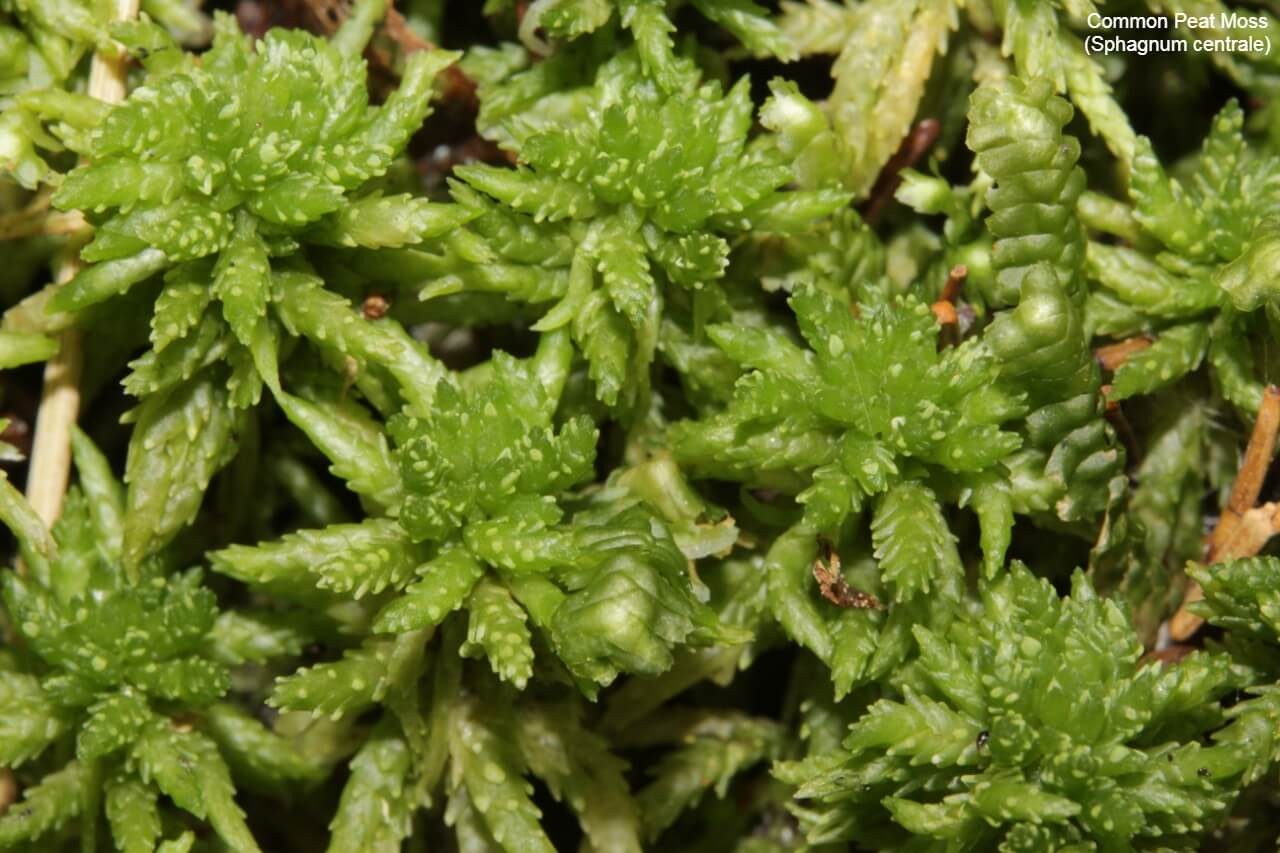
A ubiquitous ingredient in many gardeners’ toolboxes, peat moss is often utilized as a soil amendment. Interestingly, it’s a by-product of sphagnum moss and other organic materials, typically employed in potting mixes or hydroponic cultivation.
Common Tamarisk Moss (Thuidium tamariscinum)
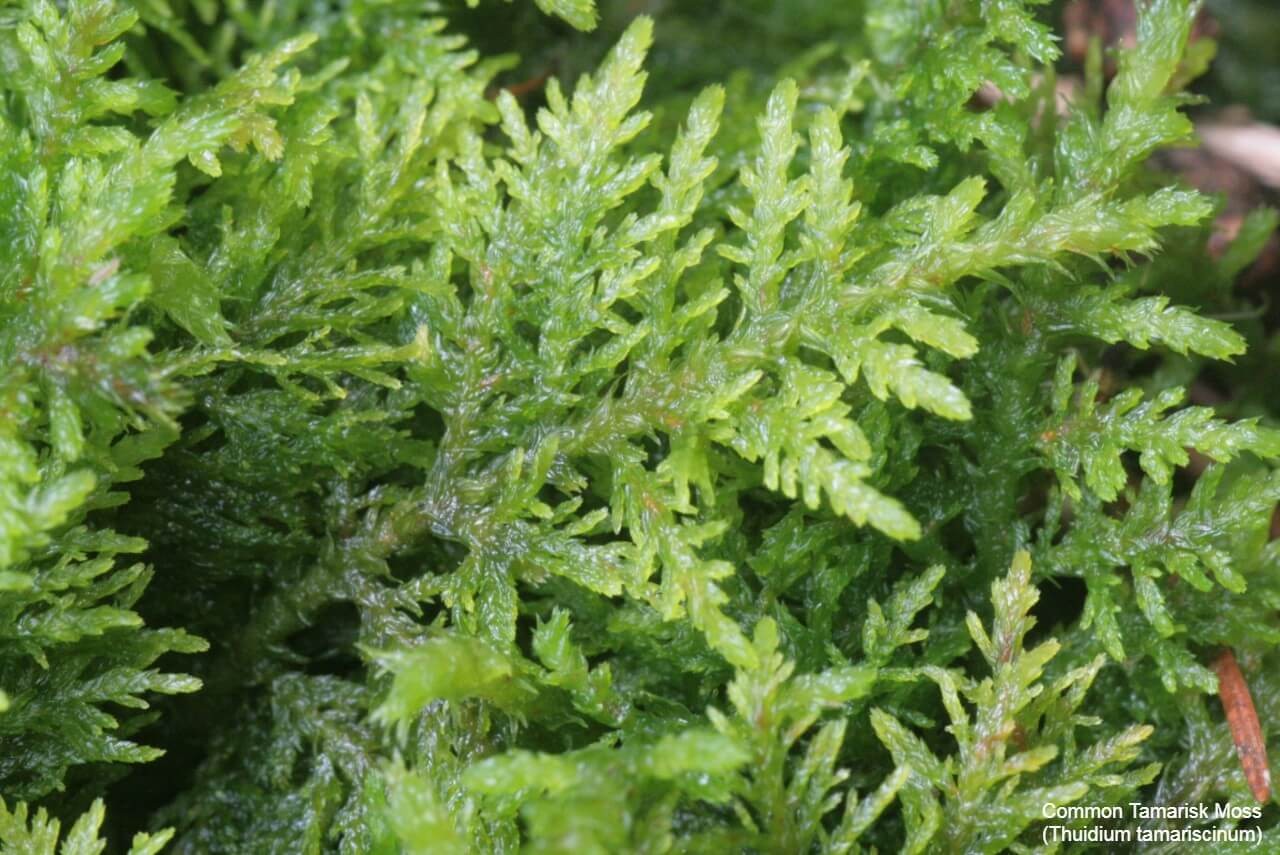
This unique moss boasts delicate, lacy foliage reminiscent of ferns, with a deep green hue and striking burgundy stems. While most mosses thrive in acidic environments, this particular species excels in alkaline soils. It grows in dense clusters in woodlands and damp areas, where its ability to tolerate slightly more basic conditions allows it to flourish.
Dwarf Haircap Moss (Pogonatum aloides)
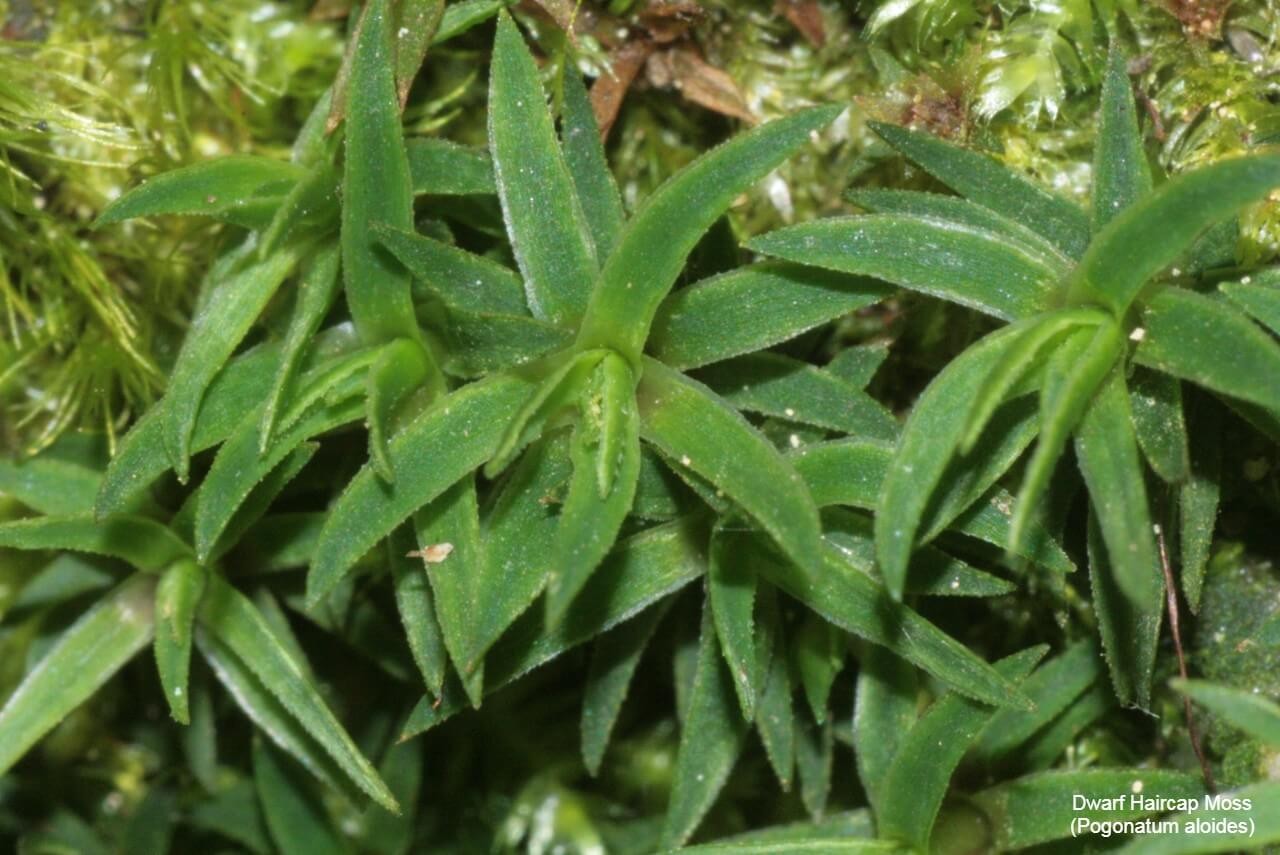
This succulent plant boasts fleshy foliage that forms a small rosette, similar to its moss-like appearance at first glance. The stems are short and a reddish-brown hue, giving it an uncanny resemblance to miniature aloe vera, except for the pale red streaks that set it apart. Not surprisingly, it thrives in sheltered locations where direct sunlight is scarce.
Fern moss (Thuidium delicatulum)
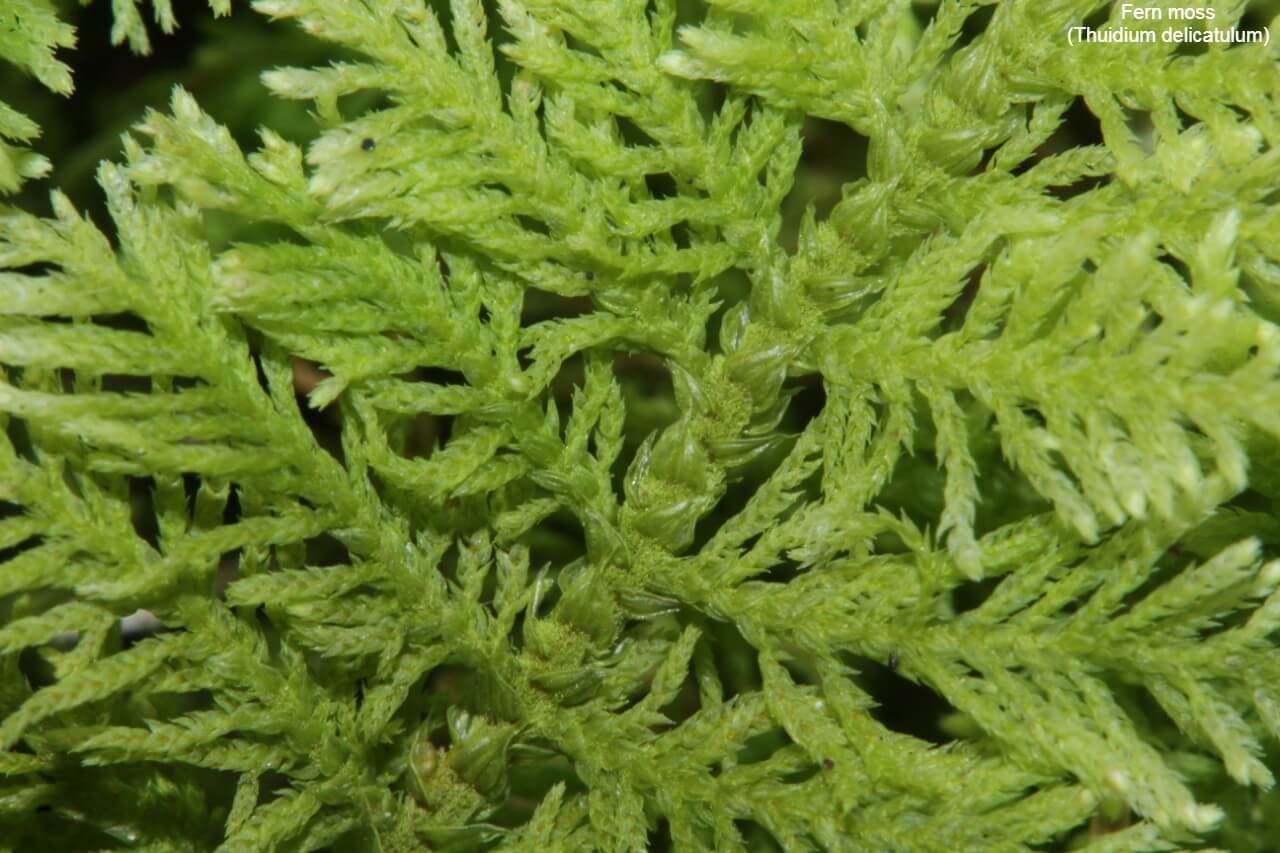
Log moss, also known as Hypnum aeruginosum, is a rapidly expanding species that thrives in environments where moisture is plentiful. Its name stems from its uncanny resemblance to ferns, albeit with a more rugged appearance. Characterized by its luxuriant velvet texture and rich green hue, log moss often finds itself at home on rocky outcroppings and other areas where humidity is high.
When harvested, it’s commonly dried and used in creative arrangements like wreaths, allowing its unique characteristics to shine.
Fire moss (Ceratodon purpureus)
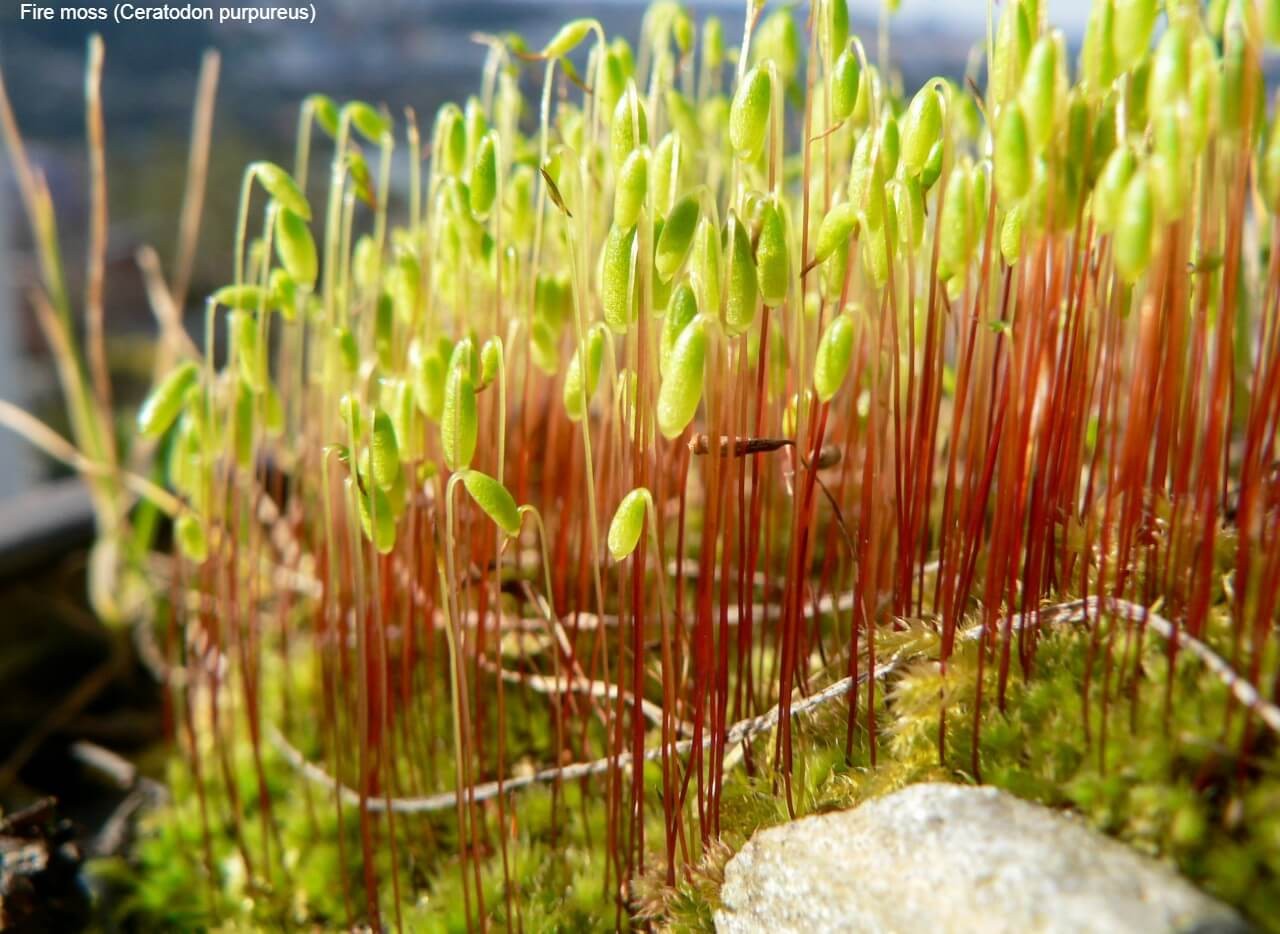
One of the most distinctive features of this plant is its unique growth pattern, where young branches sprout from the top of older ones. When it comes to habitats, this species excels in forming dense moss mats in forest environments. Its leaves are a standout feature, with thread-like structures that start out deep green and gradually turn red as they mature.
Interestingly, this plant thrives in soils rich in nitrogen, making burnt areas an ideal location for its growth – which is fitting given the origin of its name.
Glittering Wood Moss (Hylocomium splendens)
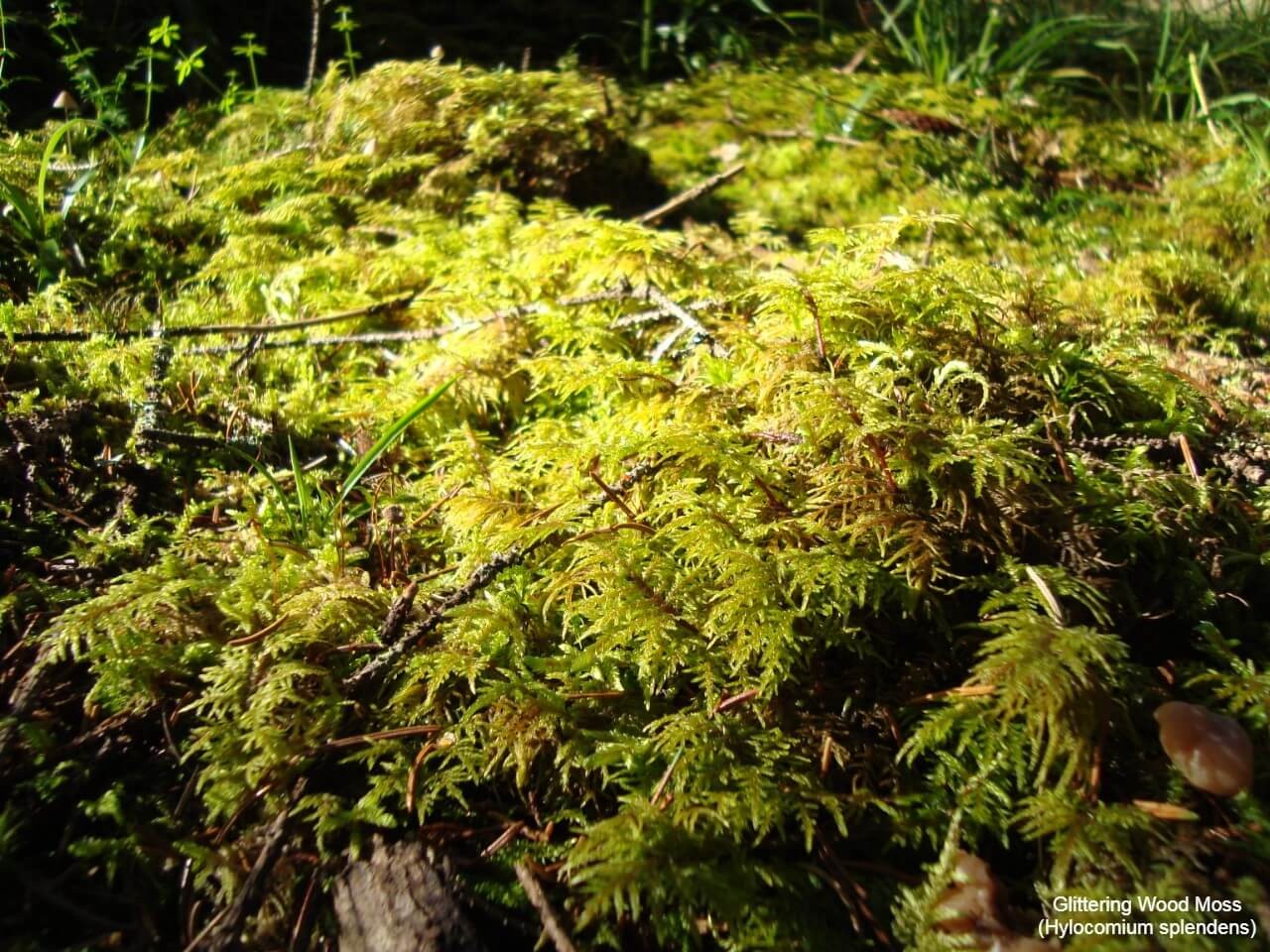
This remarkable moss is prized for its radiant, sun-kissed appearance. Native to the frigid climates of Canada, Russia, and Scotland, it boasts a unique combination of characteristics that set it apart from other types of moss. Its long, branching stems are a deep red hue, while its leaves are a luscious green with a glossy finish. When viewed up close, this miniature spruce-like moss bears an uncanny resemblance to its larger counterpart.
As such, it is often used in wreaths and floral arrangements, where its delicate beauty can be fully appreciated.
Heath Star Moss (Campylopus introflexus)
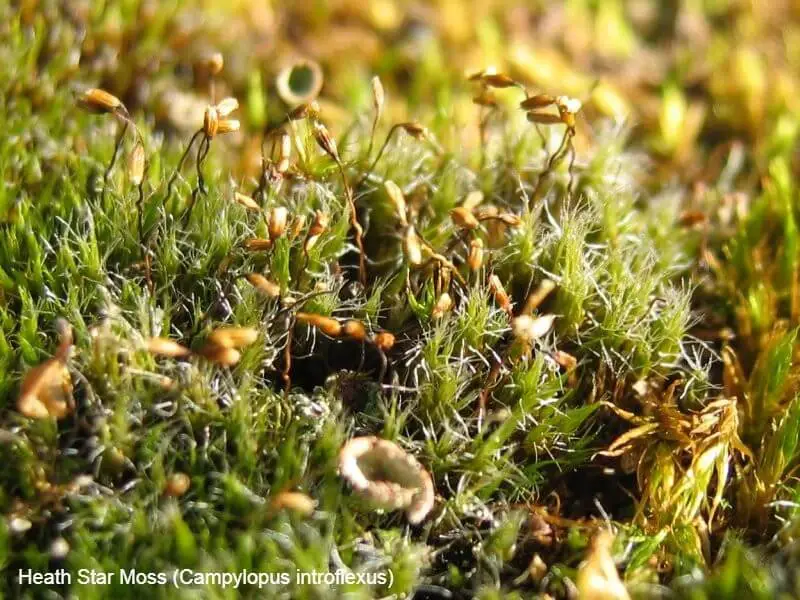
A type of moss native to South America, this species is known for its rapid growth. It thrives in unexpected places like old wood, fence posts, and even thatched roofs. At first glance, the young shoots display a vibrant green hue, while mature specimens take on a nearly black coloration. The stems themselves are distinguished by their reddish tint. Under ideal conditions, this moss can grow with remarkable vigor, which has led some to consider it invasive in certain regions.
Hypnum moss (Hypnum cupressiforme)
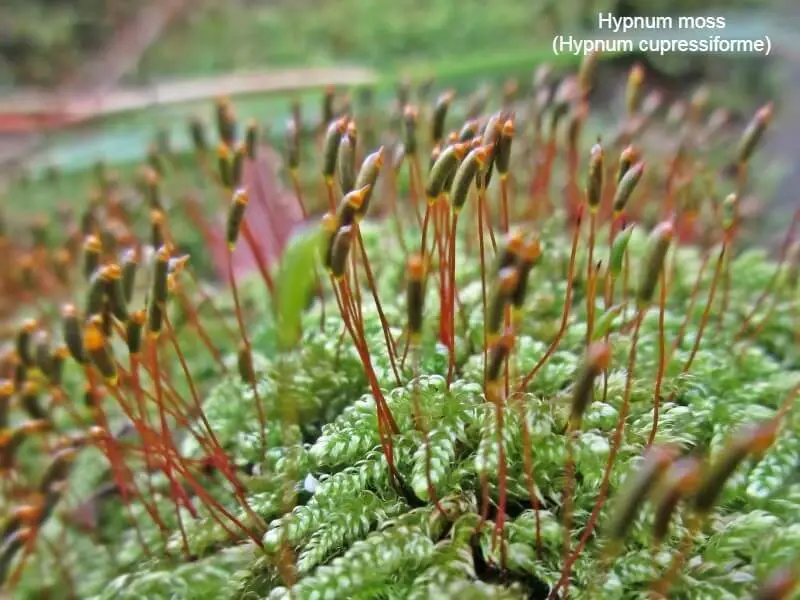
Also referred to as carpet moss or sheet moss, this type of groundcover is often used as an alternative to traditional grass lawns. Its unique characteristic is the presence of branching, low-growing stems with a bristly texture. The curly leaves display a range of hues, from yellow-green to rich green, setting it apart from brocade moss by the absence of a midrib.
Juniper Moss (Polytrichum juniperinum)
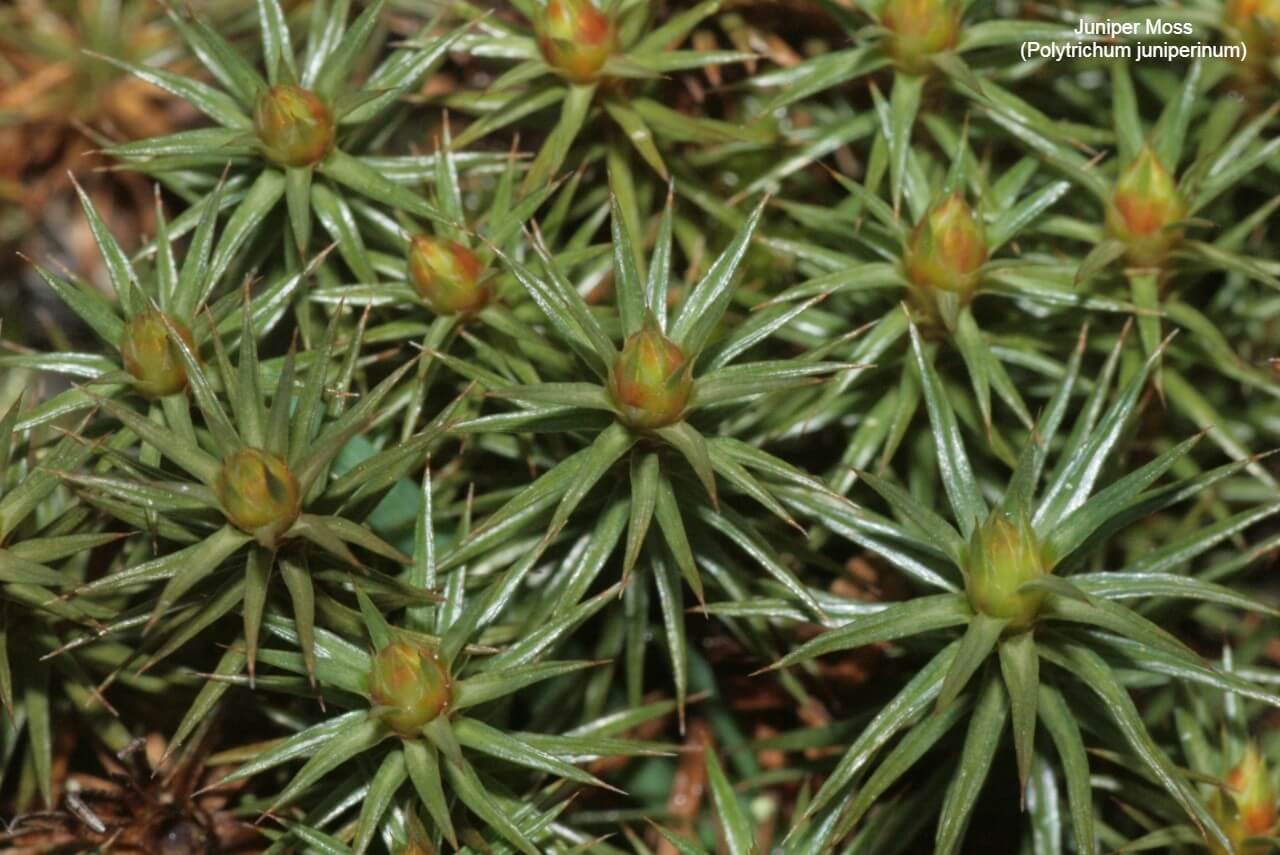
In stark contrast to other moss species, this particular type flourishes in arid environments and areas that are more exposed to the elements. Its adaptability has allowed it to spread across all continents, with common sightings in footpaths, grasslands, and even quarries. Characterized by its deep green foliage with a spiky texture and small, rosette-like formations, this moss is an intriguing find.
Mood Moss (Dicranum scoparium)
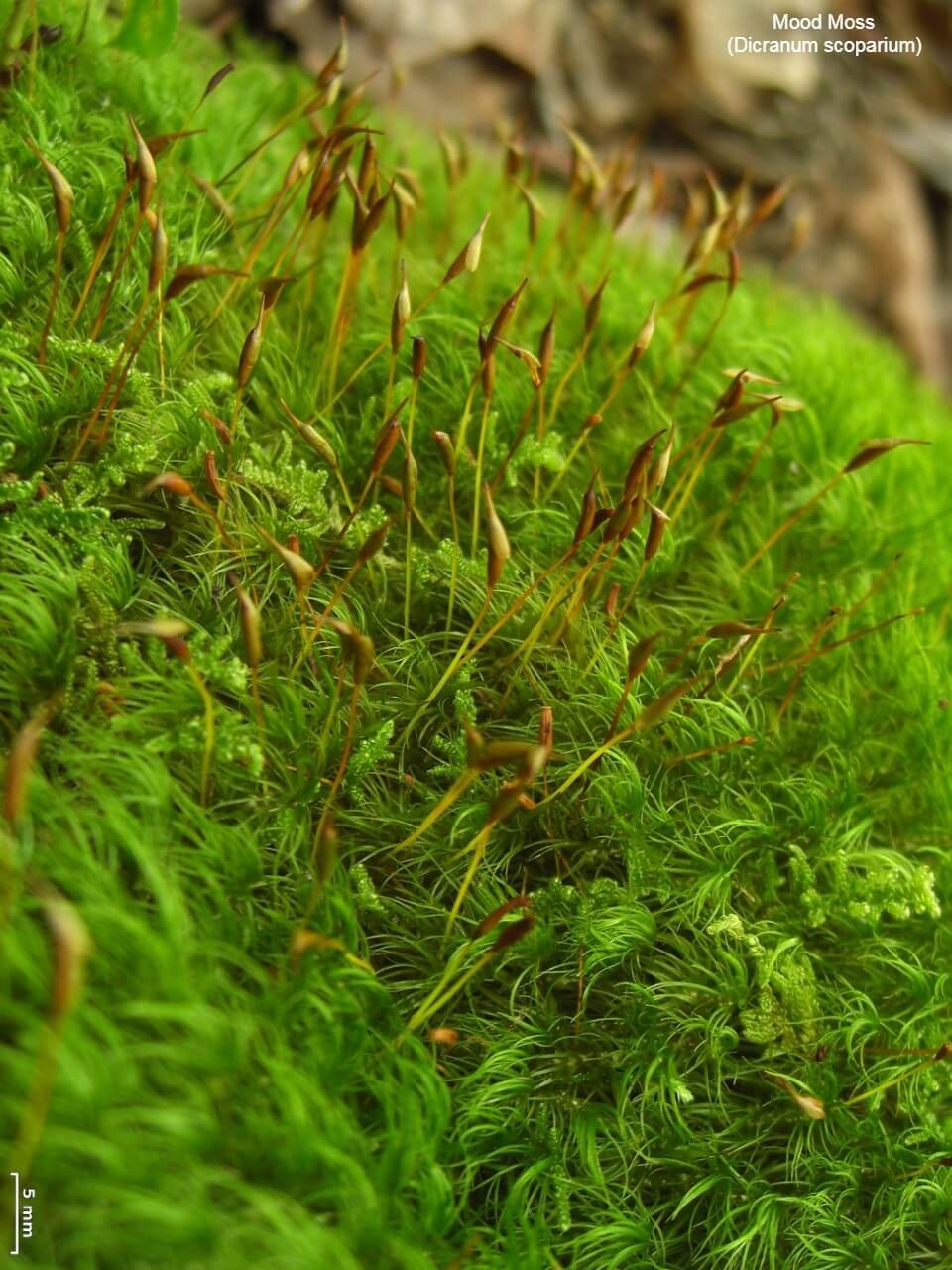
Native to North America, the broom fork moss is a distinctive species that can be identified by its characteristic spear-shaped leaves and slender, brown stems. Growing on mounds or in patches, it shares similarities with the pincushion moss, but can also be found sprouting from tree trunks, rocks, and logs. Unlike many plants, it does not require full sun to thrive and instead thrives in shadier environments.
Pincushion Moss (Leucobryum glaucum)
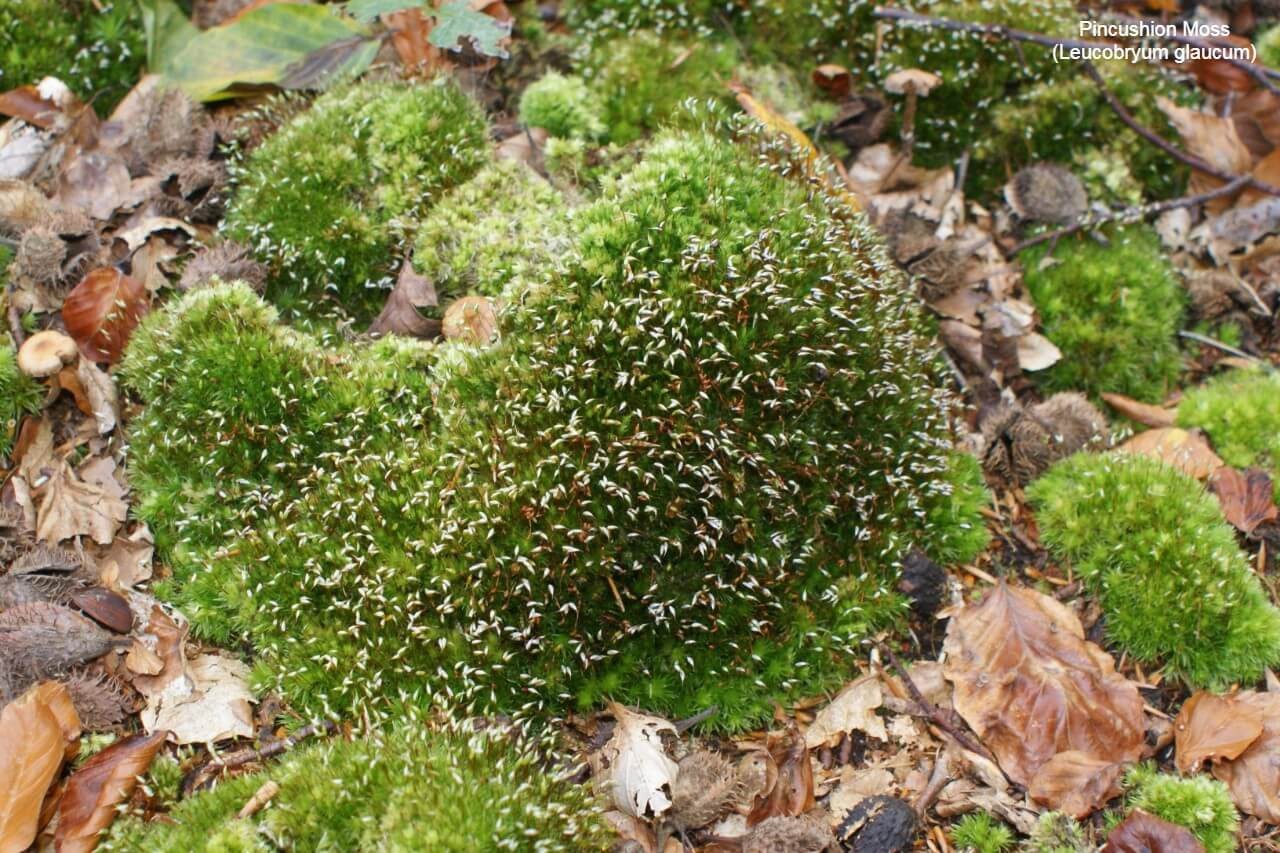
This remarkable perennial moss can flourish in a broad spectrum of soil conditions, and its adaptability allows it to thrive even in dry climates. One of its distinctive characteristics is its ability to grow in mounds, each comprising branching stems covered by a dense layer of gray-green leaves that give the appearance of being plump due to their feathery foliage.
Plume Moss (Ptilium crista-castrensis)
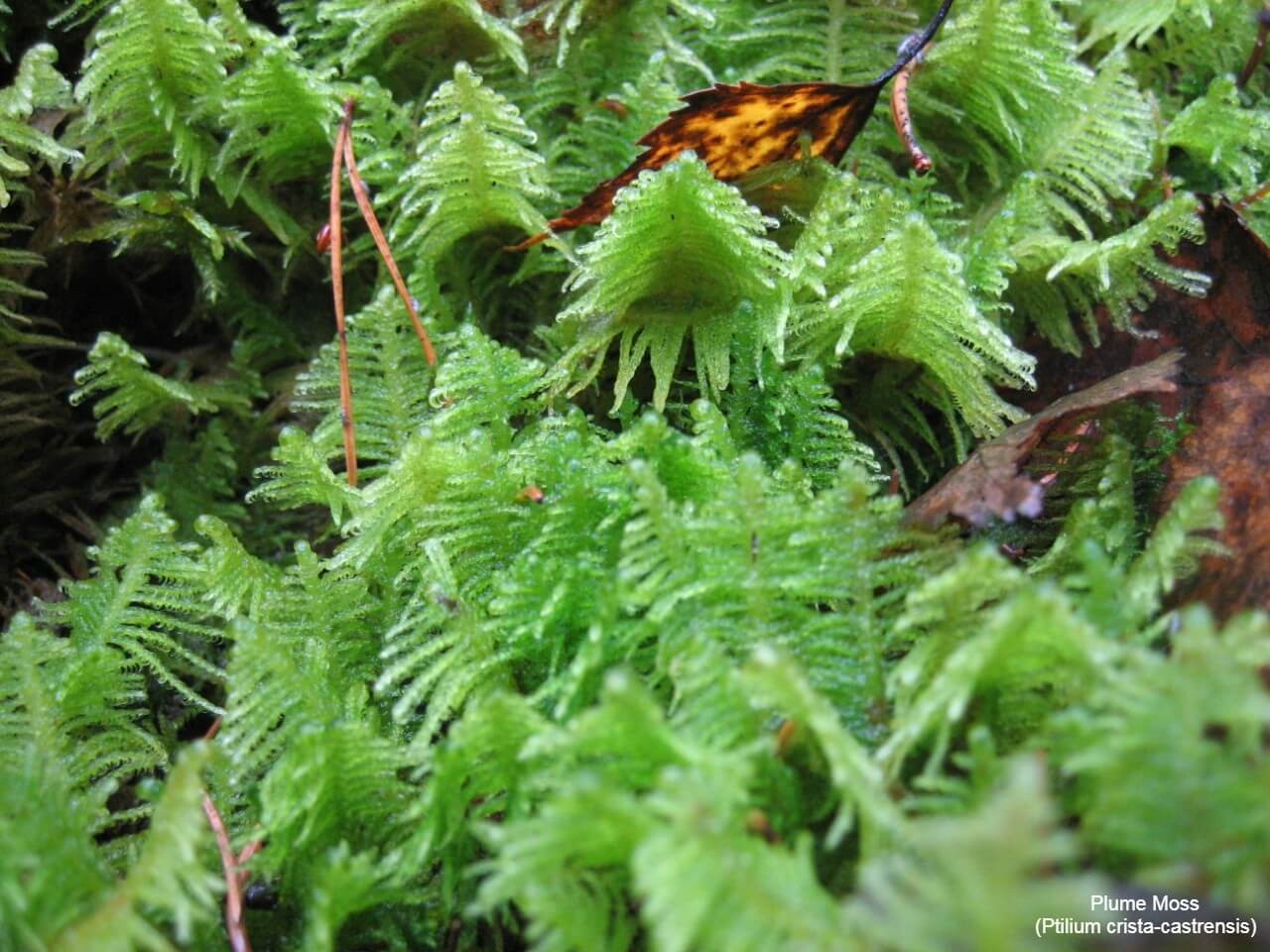
The ostrich-plume feather moss, also known as the knight’s plume moss, is primarily found in Canada and northern Europe. Its unique appearance, reminiscent of a knight’s helmet feathers, sets it apart from other mosses. This charming plant boasts dense, deep-green foliage that forms lush mats in a garden setting.
Ribbed Bog Moss (Aulacomnium palustre)

The bog groove moss, also known by its alias, is characterized by its dense tufts that form substantial mats. Its natural stronghold is found in wetlands, where it thrives with an unparalleled growth rate compared to its wild counterparts. A distinguishing feature of this species is its fine, deep-green foliage and vibrant orange-brown stems. It’s a common sight in colder regions, such as Canada, where its hardiness allows it to flourish.
Rigid Beard Moss (Didymodon rigidulus)
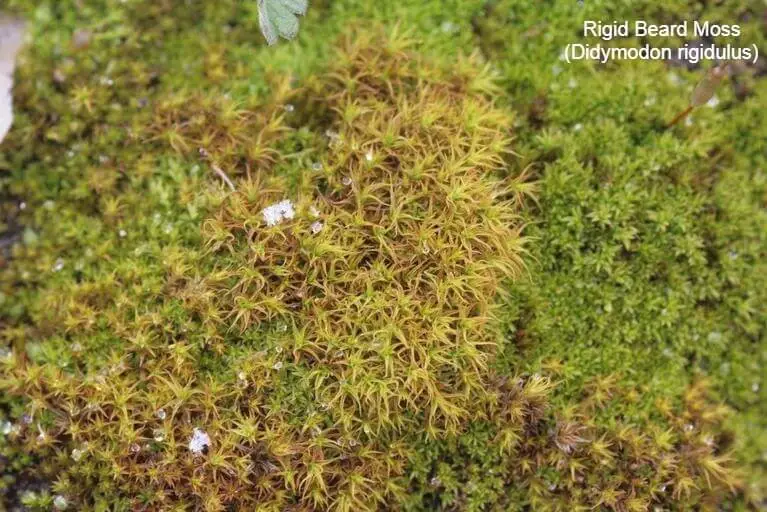
One of the most prevalent types of Didymodon mosses can be found sprouting from old pavers, slabs, or concrete surfaces. This particular species is renowned for its dense, vibrant green foliage that resembles a lush carpet. While it’s well-suited to thrive in shaded areas, it’s not particularly fond of direct sunlight and typically does best in sheltered locations where the sun doesn’t beat down on it.
Sand Beauty (Racomitrium canescens)
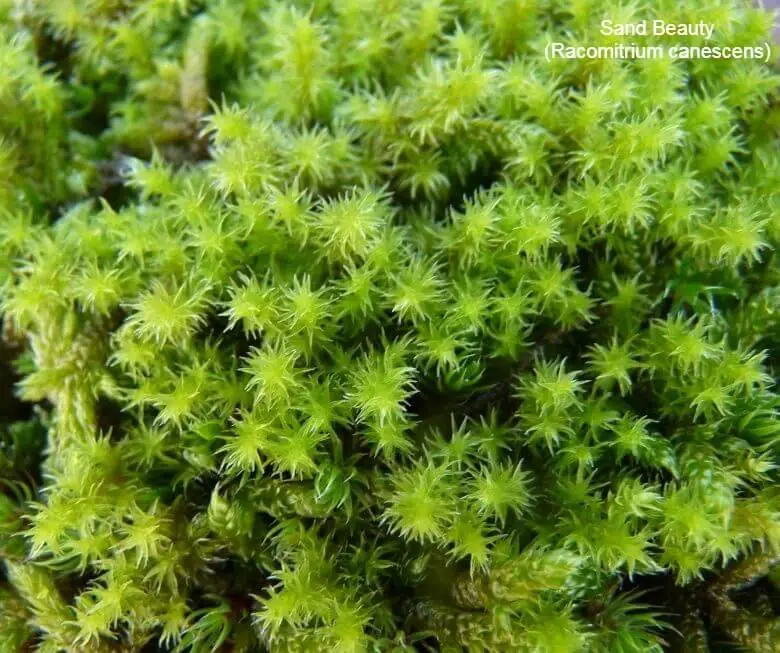
This resilient plant has adapted to survive in harsh conditions. Not only does it tolerate scorching temperatures, but it can also thrive in semi-shade environments and even sandy plots. When faced with dryness, the leaves will retract onto its stems, taking on a pale green hue. However, once it receives sufficient moisture or rainfall, they’ll regain their rich dark green color. Interestingly, this plant grows in dense clusters, reaching heights of approximately three centimeters.
Shaggy Moss (Rhytidiadelphus triquetrus)
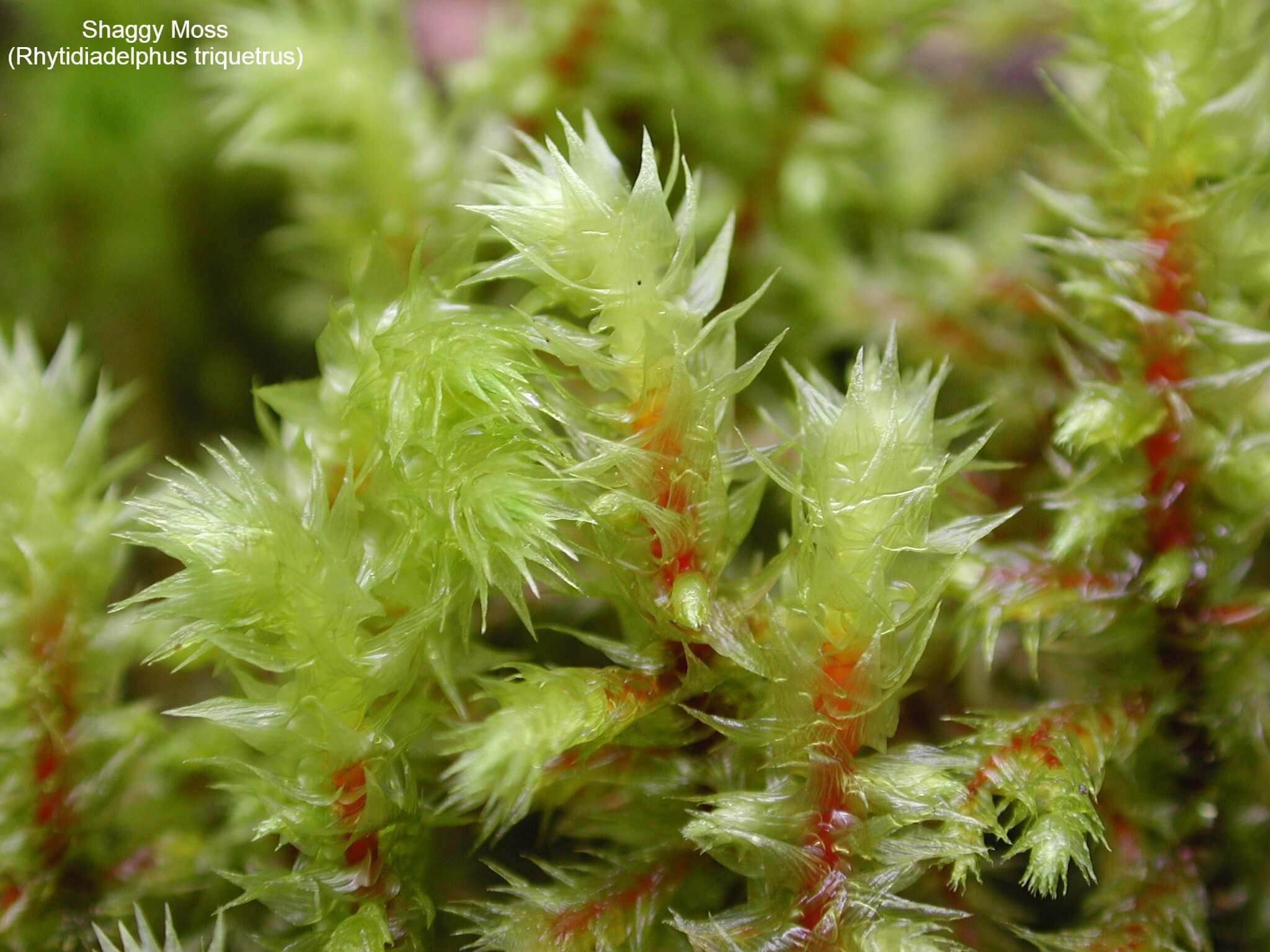
The velvety texture of this plant is characterized by long, reddish-brown stems that give it a distinctly fuzzy appearance, reminiscent of moss-covered terrain. Its youthful foliage is a vibrant green, gradually shifting to a rich brown hue as it matures. This species is endemic to the humid forests of the Midwest Pacific region, where its unique characteristics have allowed it to thrive in its native habitat.
Shiny Seductive Moss (Entodon seductrix)
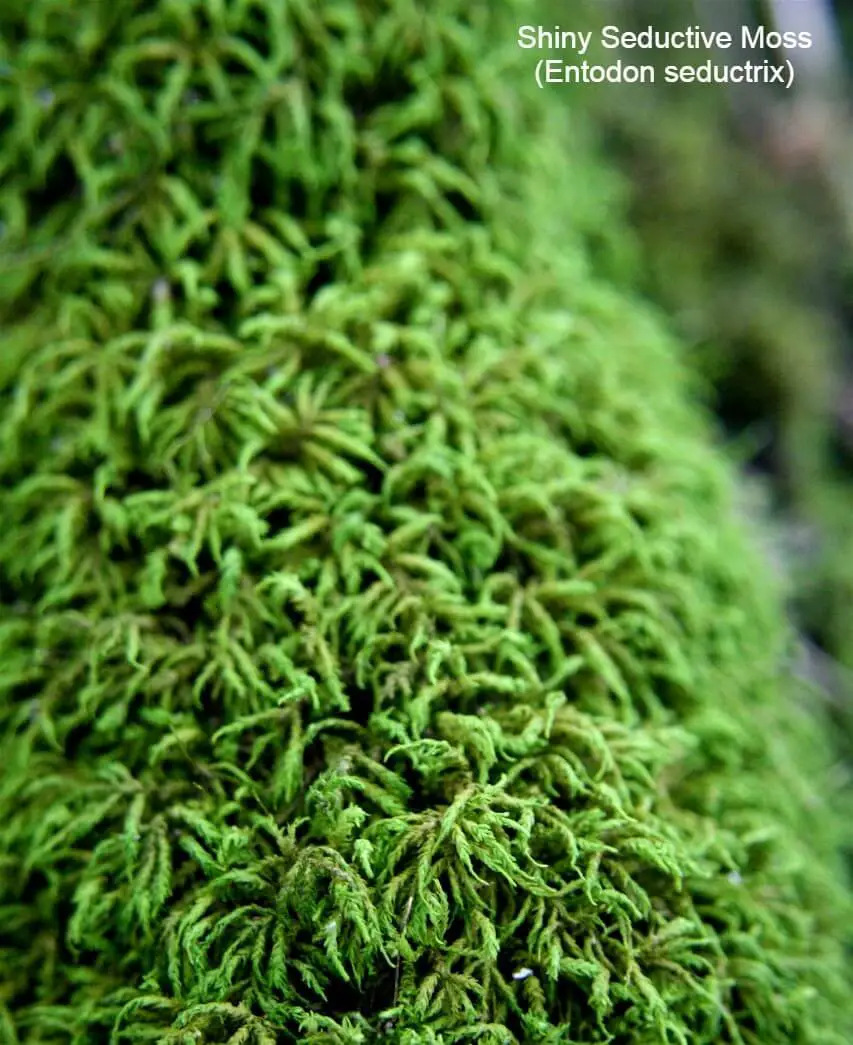
This feather moss exhibits rapid growth and spread patterns, often moving horizontally across its surroundings. Typically found thriving in environments such as decaying tree trunks and weathered wooden fencing, it produces a dense carpet of fine, deep-green leaves that can effectively cover rocky terrain in gardens. Notably, the foliage boasts a shiny texture, further enhancing its appeal. As a full-sun dweller, this native North American species is well-suited to warm climates.
Silky Forklet Moss (Dicranella heteromalla)
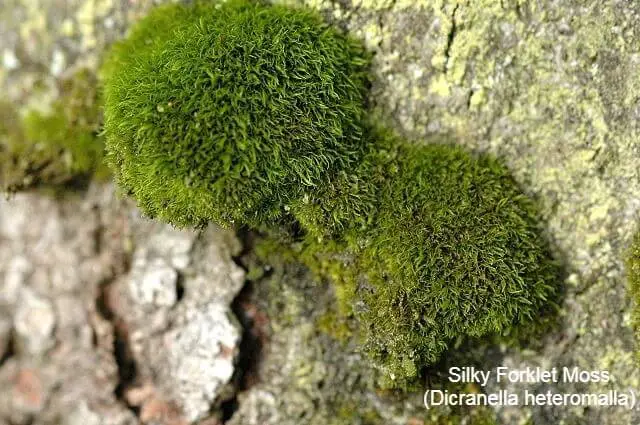
This particular moss, an Acrocarpous species, excels in environments with acidic soils and can be found growing in tree stumps, ditches, and woodlands. Its unique features include long, thin leaves that curve in the same direction, a characteristic that remains consistent regardless of its surroundings. Interestingly, it tends to grow in clumps, maintaining this curved shape even when cultivated elsewhere.
Spoon Leaved Moss (Bryoandersonia illecebra)
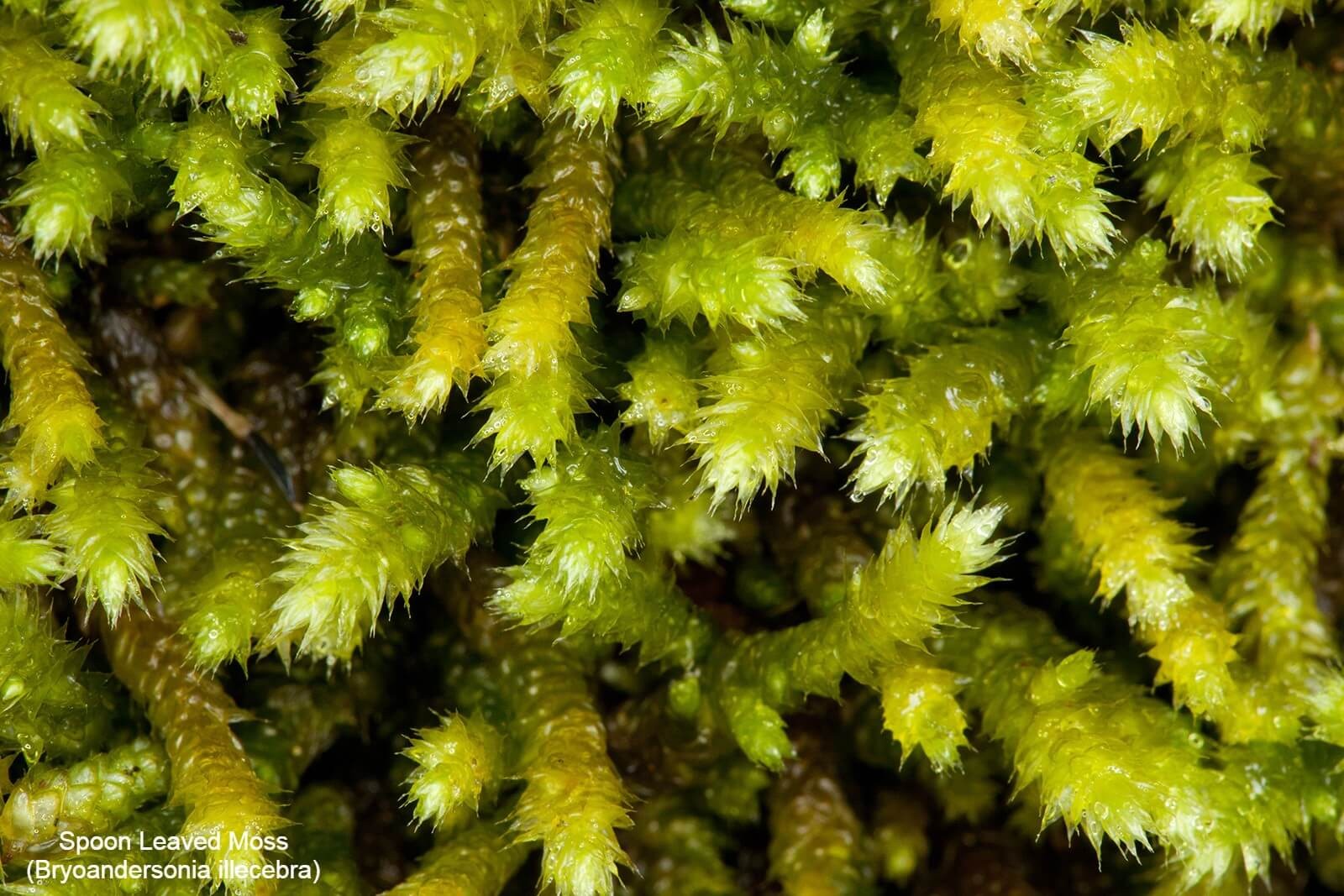
The distinctive feature of this plant is its vibrant, pale foliage. The stems remain concealed amidst the dense leaf arrangement. As they mature, these leaves will eventually turn a rich brown hue. This species thrives in well-drained soils that are rich in nutrients and characterized by their fertile, rocky, and very moist nature. Interestingly, it’s considered relatively rare in Canada, with its sole presence confined to the province of Ontario.
Springy Turf Moss (Rhytidiadelphus squarrosus)
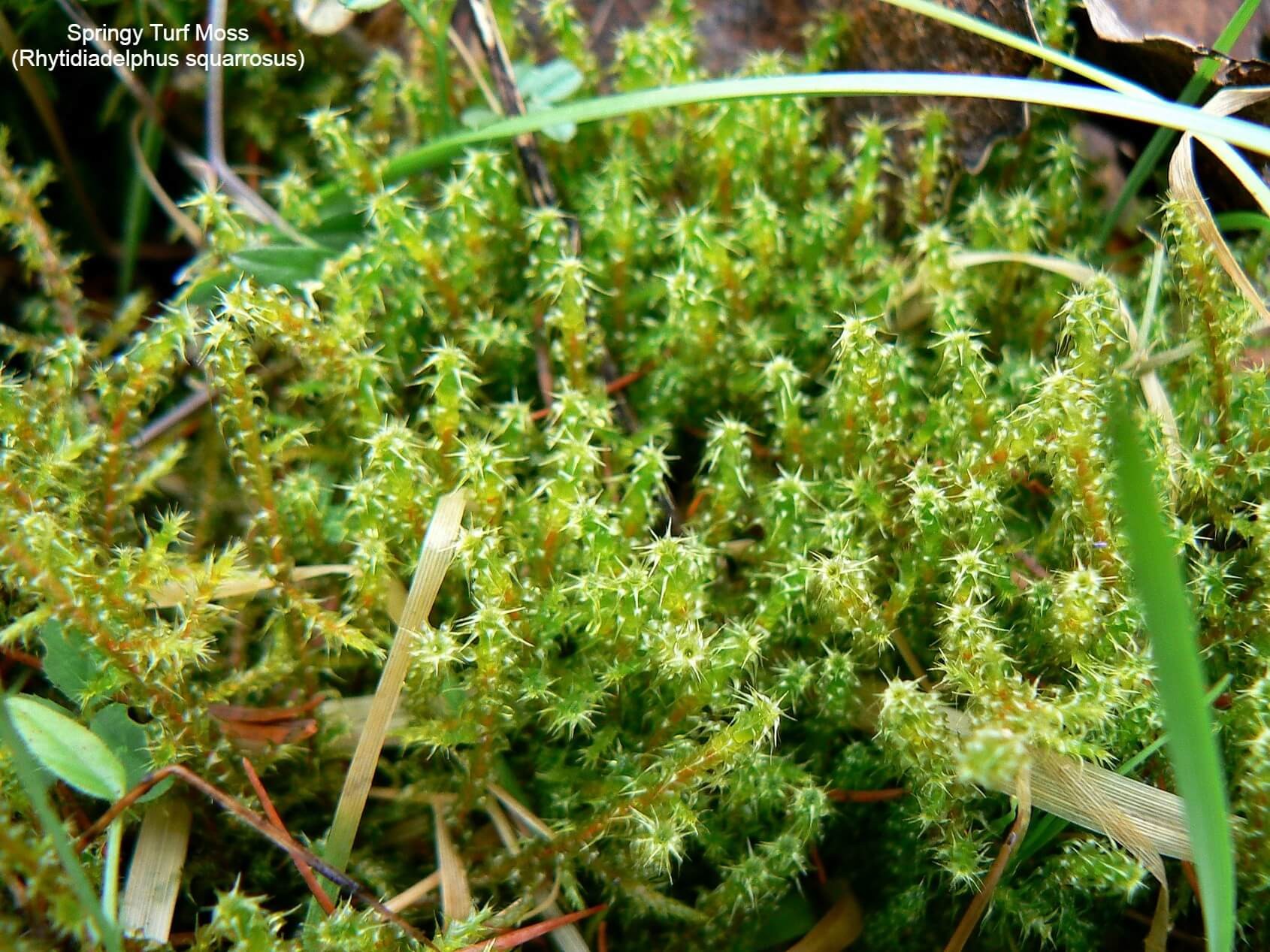
This striking plant can grow up to 6 inches tall, thriving in acidic and damp/moist soils that are often found in lawns and grasslands. Its most distinctive features include dense, pale green leaves and bright red stems. Not only is it a visually appealing addition to any landscape, but it’s also a practical choice for ground cover due to its spiny, thick foliage. It’s also commonly known as ‘electrified cat’s tail’, a nickname that reflects the plant’s striking appearance.
Square Goose Neck Moss (Rhytidiadelphus squarrosus)
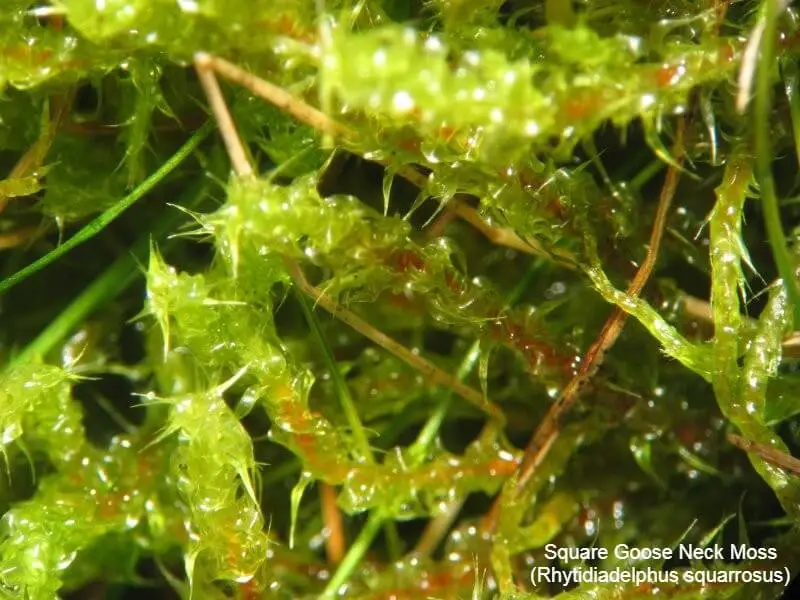
In many woodland areas surrounding streams, marshlands, and golf courses, this particular plant species can be commonly spotted. Its unique characteristic lies in the dense tufts of carpet-like foliage that arise from its branching stems. Notably, these stems can grow up to 15cm in length, featuring sharp bends that radiate outward.
Tousled Treasure/Callicladium moss (Callicladium haldanianum)
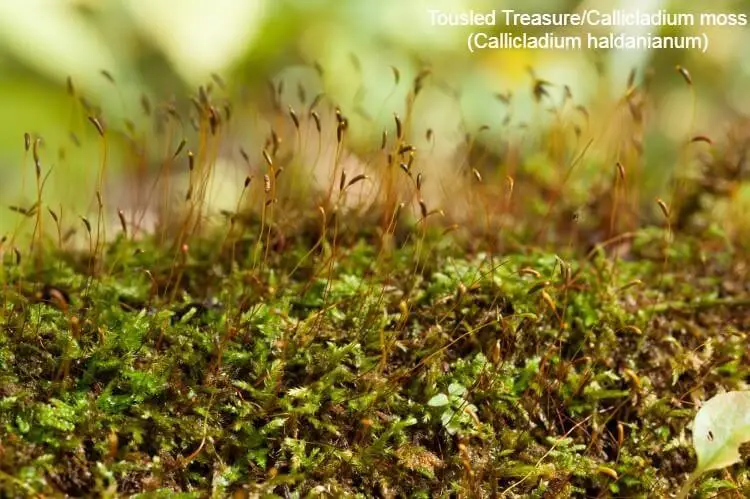
This species thrives in environments characterized by rocky, sandy soils and semi-shaded areas with consistent moisture. Its dark green foliage boasts a glossy sheen, accompanied by striking red spores. As an attractive addition to lawns, it is notable for its long, branching habit, which yields dense tufts of lush, carpet-like texture as it spreads outward.
Warnsdorff’s Peat Moss (Sphagnum warnstorfii)
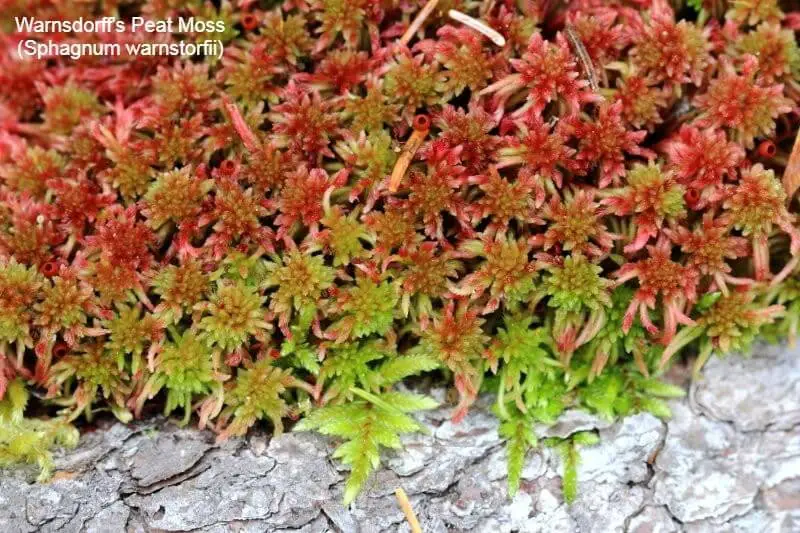
A staple in many gardeners’ arsenals, peat moss is a versatile soil amendment with a rich history. Its production process is centered around the cultivation of sphagnum moss, specifically the dried and processed by-product of this plant. Interestingly, it’s mainly cultivated for this purpose in regions like New Zealand and Peru. The sphagnum moss itself boasts an impressive 350 species, mostly thriving in the northern hemisphere – a testament to its hardiness and adaptability.
Water Screw Moss (Syntrichia latifolia)
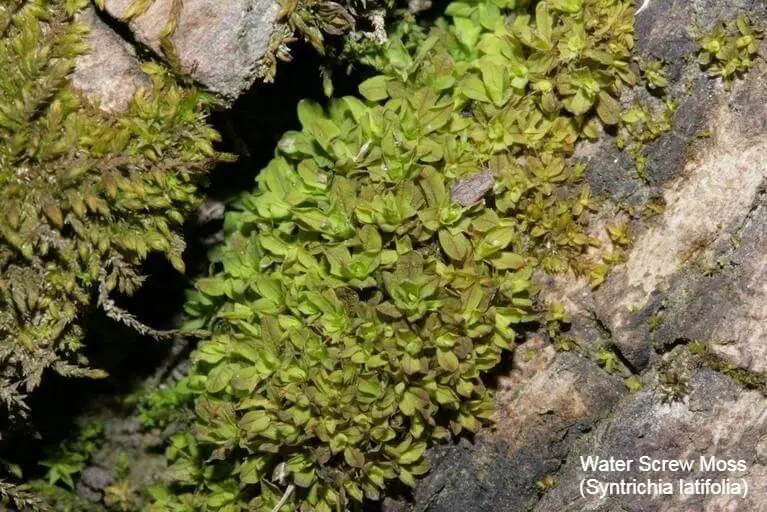
This compact species is characterized by its diminutive stature, reaching a maximum height of just one inch. Its leaves are broad and clustered around the robust burgundy stems, giving it a visually striking appearance. When found in their natural habitat, these mosses often thrive in shaded areas such as old logs, fence posts, and roads, where they can be distinguished by their small green flowers.
White Cushion Moss (Leucobryum Glaucum)
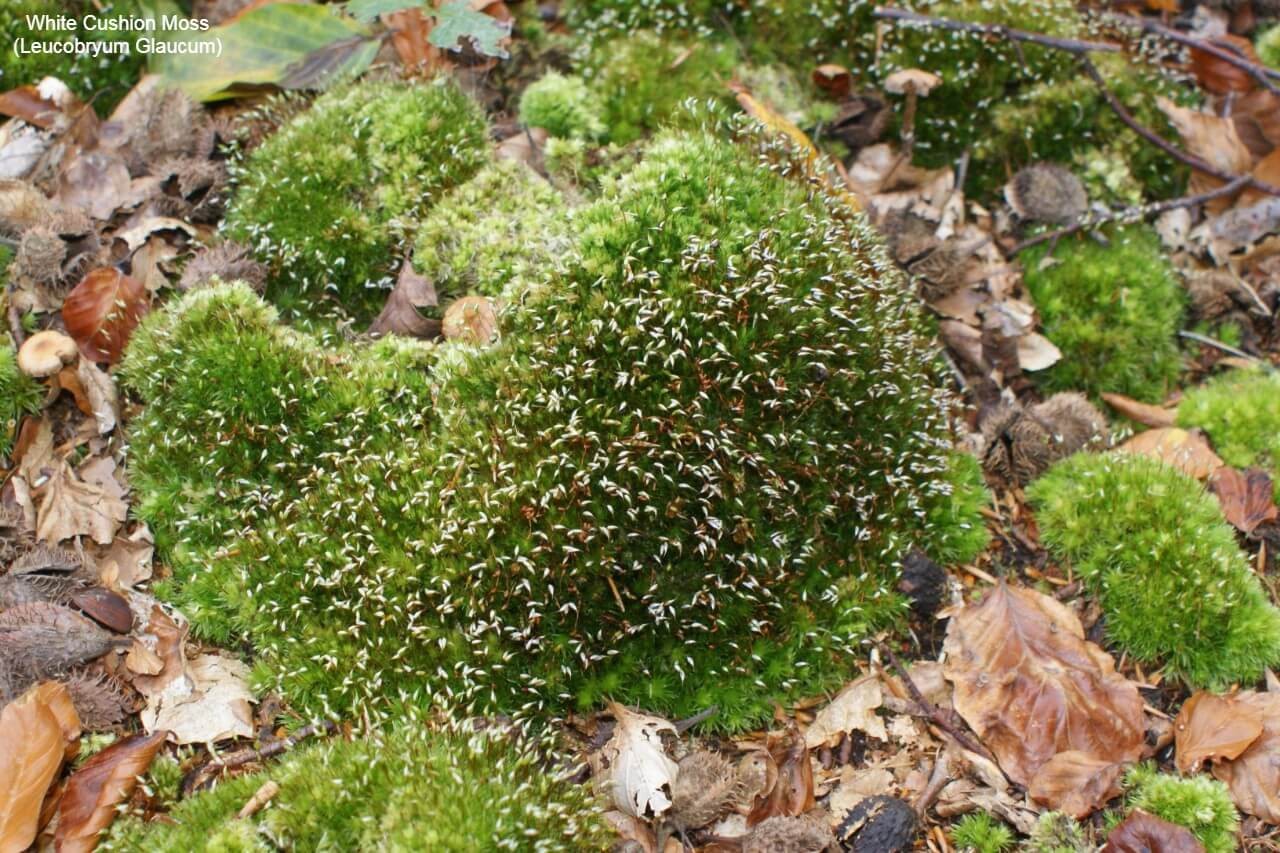
The ‘pale green’ succulent gets its name from its distinctive pale green hue accompanied by whitish tips and a mound-forming growth habit. As it grows, it produces dense patches that can reach up to 4 inches in height before gradually shifting to a blue-green color when exposed to increased rainfall or moisture-rich environments. This succulent is particularly prevalent in Florida, eastern Mississippi, and Canada.
Uses of moss
When it comes to the versatility of moss, we’ve only scratched the surface. This humble plant has a multitude of uses that extend far beyond its aesthetic appeal. From providing a source of clean drinking water in forests to serving as a sterile dressing material for wounds, sphagnum moss is a natural resource with a range of practical applications.
Additionally, dried moss can be used as a fire starter, while its waterproof and insulating properties make it an ideal material for various outdoor pursuits. Furthermore, certain types of moss are not only edible but also possess natural water filtration capabilities, further solidifying their value in the natural world.
How to get rid of moss
While there are various approaches to eliminating moss, one of the most effective methods involves utilizing dish soap for a thorough flush-off. Additionally, applying an iron sulfate moss killer can yield impressive results. Furthermore, altering the pH level by adding lime to create an acidic lawn environment can also prove successful in eradicating this pesky growth.
Conclusion
In reality, moss transcends its reputation as a simple, ancient green patch. Beyond serving as a grass substitute, it boasts an impressive array of environmental applications that have earned its significance in modern times, particularly among gardening aficionados.
Related Posts
To embark on a career as a plant breeder, follow these step-by-step guidelines. First, develop a solid understanding of plant biology by studying the fundamentals of botany, genetics, and horticulture. Next, gain practical experience through internships or volunteer work with experienced breeders. Building relationships within the industry can also be beneficial for future collaborations and job opportunities.
Once you’ve gained a strong foundation in plant breeding, consider earning a degree in a related field to further your knowledge and career prospects. Additionally, stay up-to-date with the latest research and advancements in the field by attending conferences, workshops, and reading relevant publications.




